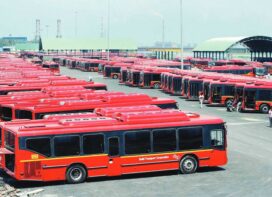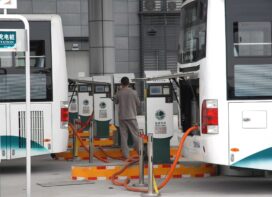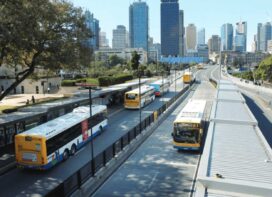
Ashok Katariya, Chairman, Ashoka Buildcon Ltd addresses the challenges in executing the Highway Projects in India at the Smart Mobility 2018 conference
The Ministry of Road Transport and Highways has set an ambitious target of constructing 45 kilometres of highways on every day of this financial year. However, several factors have slowed this ideal rate of construction down to just 23 kilometres per day. As one of India’s biggest highway project executing companies, Ashoka Buildcon has an insider’s perspective on the present challenges in highway construction.
But first, some background on Ashoka Buildcon; founded in 1975, we have been in the highway development sector for the last 23 years. The Golden Quadrilateral project connecting the four metropolitan cities, the Mumbai- Pune Expressway and scores of flyovers across Mumbai kick-started our growth as contractors for Public-Private Partnership (PPP) road projects. Our first project – executed on Build-Operate-Transfer (BOT) basis – was a small bypass near Dhule; we went on to deliver major highways such as the East Coast Road, recognised as a model road by the Government of India. Even now, over half of all PPP projects are roads and bridges.
We started off with projects worth just ₹7 crore; over the years, we have worked on projects cumulatively worth ₹16,000 crore, laying over 15,000 kilometres of national and state highways all over the country. Many of our projects are now executed under the Engineering- Procurement-Construction (EPC) model, and we are also one of the biggest players in highway operations and maintenance.
Initially, we had meagre funding. IDFC invested ₹100 crores in Ashoka Buildcon in 2006, then we floated a public offering in 2010, which netted ₹225 crores. With foreign investments being permitted, some capital also came in from Japan. Recently, SBI Macquarie invested ₹800 crore in a subsidiary of Ashoka Buildcon. Our commitment to quality and ability to scale up has reinforced our investors’ faith in our vision.
Challenges in Highway Project Execution:
Volatility of the Indian Economy: PPP projects often have long execution timelines, sometimes as long as 20 to 30 years. During this period, interest rates fluctuate frequently and unpredictably. This volatility affects the finances of the executing agency, in turn affecting the project.
Corporate bonds are the best solution to achieving stability in this sector. India needs to rethink and reform how it finances its roads.
Red-tapism:
A number of factors beyond the control of the executing agency can cause delays in completing the entire length of the road. These factors may create a situation where, except for a small part that could not be constructed in time due to local deterrents, the entire road was constructed. The overseeing government then refuses to provide a completion certificate to the agency, delaying payments and having a domino effect on other projects as well.
Government bodies need to monitor local conditions, acknowledge that a small section of the road could not be constructed despite the agency’s best efforts, and de-link completion of this affected stretch from the scope of completion.
Land Acquisition:
At present, tenders for highways are supposed to be floated after 80% of the land required has already been acquired. In practice, this figure is still being reached when agencies bid for the contract. Hence, when the chosen agency reaches the site to commence work, land-owners refuse to provide access to the land, delaying projects at the very outset, and driving up costs. If the project is being executed under an EPC contract, this causes huge losses for the contractor as well.
Often, this refusal to hand over a site to the contractor is caused by delays in paying compensation to the landowner. Governments need to plan for and facilitate these payments promptly, and local bodies need to support the agency in taking over the land.
Tenders should be floated after at least 90% of the land has been acquired, allowing the agency to begin work with maximum possible efficiency.
 TrafficInfraTech Magazine Linking People Places & Progress
TrafficInfraTech Magazine Linking People Places & Progress


